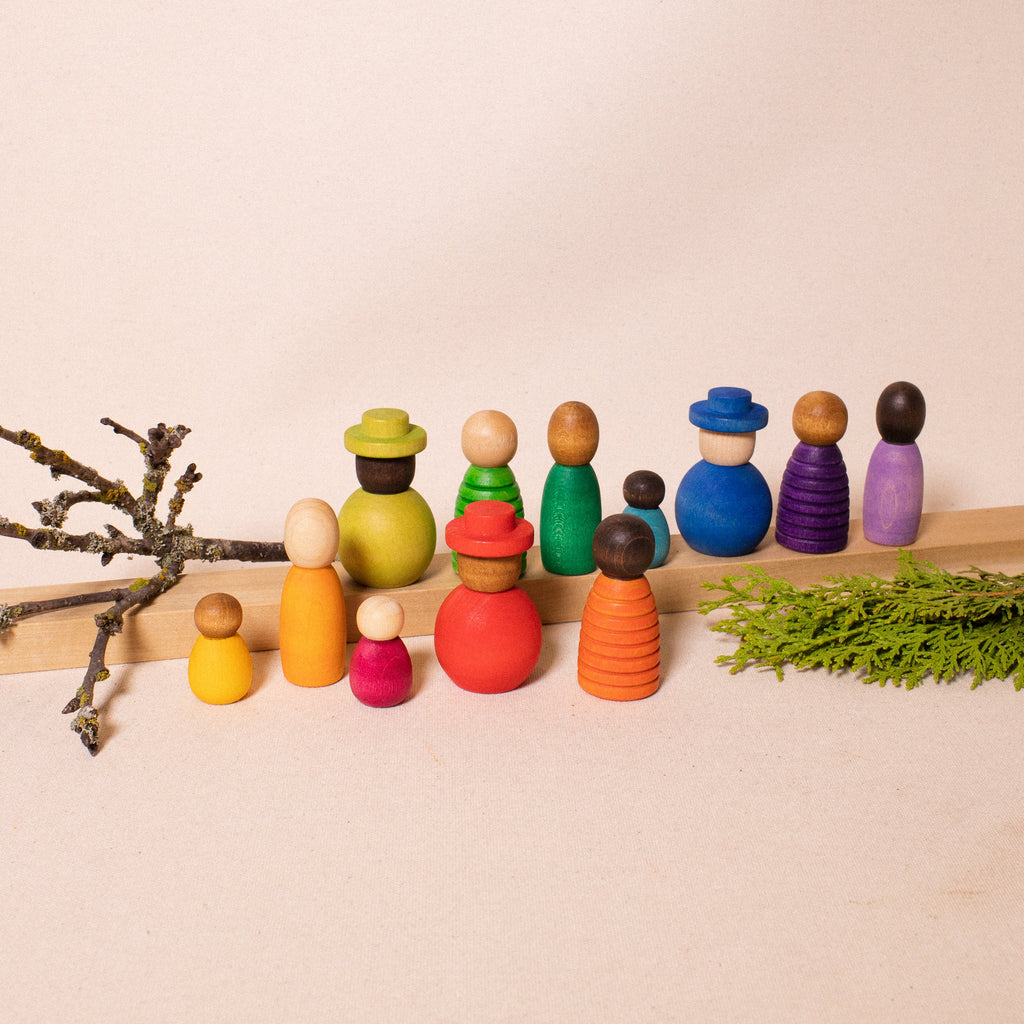What Is Loose Parts Play?

"Loose Parts" is a term first coined by artist and architect Simon Nicholson. He rejected the idea that only select people were "creative" and instead believed that introducing loose parts into children's environments would foster their creativity. In fact, Nicholson's theory extends to the children's input into the design of the space itself.
So what are loose parts?
Loose parts are materials, natural or manmade, that can be moved, manipulated, lined up, transformed, combined, taken apart and put back together in any number of ways. They can be used alone or with other materials and they come with no specific directions. There is no specific function or goal. Closely connected to loose parts play is the idea of open-ended learning. There is not a lot of difference in childhood between art and science, work and play - and all of it is learning! Open-ended materials and experiences encourage problem solving and are child-led, rather than adult-directed. However, the adult plays an important role in preparing the environment for open-ended learning experiences.
Some examples of loose parts materials could be:
- building materials and blocks
- measuring and pouring containers
- baskets and boxes
- fabric
- mirrors
- play animals, cars and people
- art materials such as buttons, pipe cleaners, corks, popsicle sticks
- rocks, pebbles, feathers, shells
- water and sand
The adult's role in loose parts play could be setting up an "invitation to play" on a child height table. Offering a variety of materials in different baskets and containers within a defined work area like a tray would be one type of invitation. Another type could be a landscape created with coloured blocks, wooden animals and human figures, or a water table with bubbles, sieves and cups.
Once the invitation has been created it is up to the adult to step back and allow the child to lead the activity or use, interpret and manipulate the materials on their own. It is up to the adult to ensure the materials are safe and appropriate for the child so that the child is free to explore them. With this in mind materials set out for a child under three should be large enough that they are not a choking hazard.
Often when a child has an opportunity to use loose parts in their play we will see them making concrete connections and moving materials from one play area to another. For example, a plate of rocks will become "food" for their toy animals or "money" for their store. When children are allowed to integrate different materials creatively they are experiencing open ended learning.
Our Kitsilano shop is curated with the philosophy that child-driven, imagination based, open-ended play materials have longevity and unlimited learning potential.
Visit our loose parts play collection to help you build your own creative library of materials.
Contributed by Shauna Farrell
